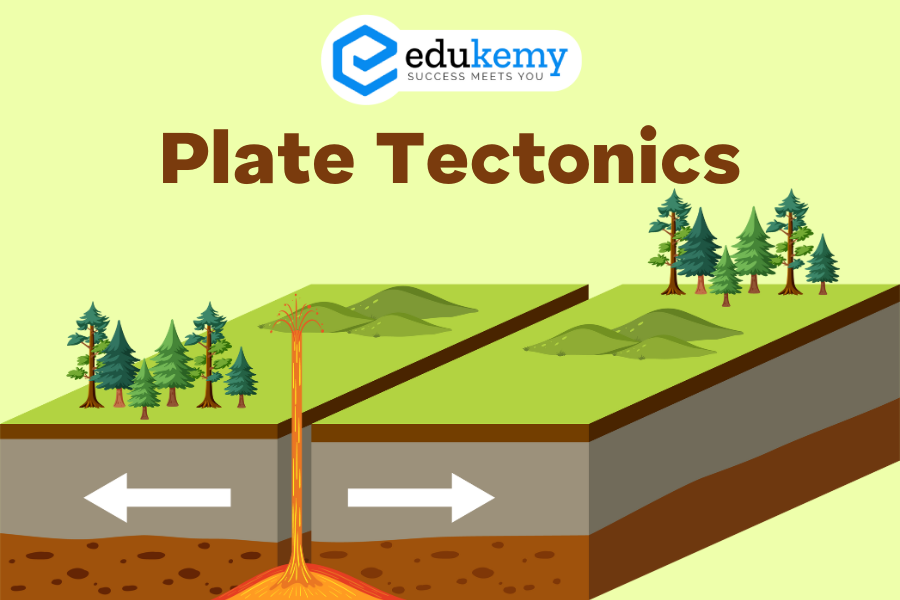
The concept of plate tectonics, a cornerstone in the understanding of Earth’s geological dynamics, has evolved from the synthesis of two fundamental theories: isostasy and continental drift. Isostasy, proposed by George Airy in the 19th century, suggests that Earth’s lithosphere floats atop the denser asthenosphere, adjusting its equilibrium to maintain stability. Meanwhile, continental drift, pioneered by Alfred Wegener in the early 20th century, postulated that continents were once connected as a single landmass called Pangaea and have since drifted apart. The integration of these theories has given rise to the paradigm of plate tectonics, which elucidates the movement and interaction of Earth’s lithospheric plates. For instance, the mid-oceanic ridges, such as the Mid-Atlantic Ridge, provide tangible evidence of seafloor spreading, where new oceanic crust forms as tectonic plates diverge. Conversely, the Pacific Ring of Fire, characterized by volcanic activity and seismicity, illustrates the subduction zones where denser oceanic plates descend beneath lighter continental plates, demonstrating the dynamic nature of plate interactions. Thus, plate tectonics serves as a unifying framework to comprehend geological phenomena, shaping the Earth’s surface and influencing natural processes over vast temporal scales.
Contents
Answer
Introduction:
Plate tectonics is a geological theory that explains the Earth’s lithosphere’s dynamic behavior, emphasizing the movement of tectonic plates. This theory integrates insights from isostasy and continental drift, two foundational concepts in geophysics.
Body:
Isostasy:
Isostasy refers to the equilibrium between the Earth’s lithosphere and asthenosphere, where variations in crustal thickness result in adjustments to maintain balance.
- The concept contributes to understanding the vertical movements of Earth’s crust.
- For instance, the uplift of mountain ranges like the Himalayas is a consequence of isostatic adjustments due to the collision between the Indian and Eurasian plates.
Continental Drift:
Continental drift, proposed by Alfred Wegener, suggests that continents were once connected as a single supercontinent (Pangaea) and have since drifted apart.
- For example, the congruence of fossilized flora and fauna on opposite sides of the Atlantic supports this theory.
Derivation of Plate Tectonics from Isostasy:
Isostatic adjustments are integral to plate tectonics.
- When a tectonic plate undergoes subduction, the descending plate’s denser material displaces mantle material, causing isostatic rebound and influencing plate movement.
- The Andes mountain range exemplifies this, as the subduction of the Nazca Plate beneath the South American Plate induces isostatic uplift.
Derivation of Plate Tectonics from Continental Drift:
The movement of tectonic plates, as envisioned in plate tectonics, is a direct result of the ongoing process of continental drift.
- The separation of plates at mid-ocean ridges, such as the Mid-Atlantic Ridge, aligns with Wegener’s continental drift concept.
- This divergence and subsequent seafloor spreading exemplify the dynamic interactions underlying plate tectonics.
Conclusion:
Looking forward, continued research and technological advancements will refine these theories, providing deeper insights into the intricate mechanisms shaping our planet. The synergy of isostasy and continental drift within plate tectonics remains fundamental for unraveling Earth’s geological complexities.
In case you still have your doubts, contact us on 9811333901.
For UPSC Prelims Resources, Click here
For Daily Updates and Study Material:
Join our Telegram Channel – Edukemy for IAS
- 1. Learn through Videos – here
- 2. Be Exam Ready by Practicing Daily MCQs – here
- 3. Daily Newsletter – Get all your Current Affairs Covered – here
- 4. Mains Answer Writing Practice – here

